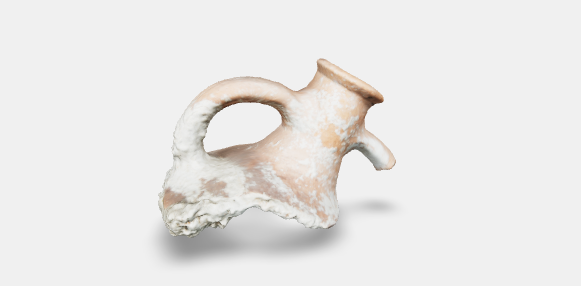Fragmentary amphora, type Keay LII. Neck with the rim and one handle are preserved. Portion of the shoulder.
Triangular-section, everted rim. Tapered neck that extends from shoulders that should have been attached to a globular or pear-shaped body. Pronounced handles with enlarged ribbons that were set between the neck and the shoulder.
Keay LII (KEAY 1984, fig. 114) is a type of amphorae produced between the IV and the VI-VIII century, certainly in Calabria and Sicily, where its presence in winemaking facilities was confirmed.
The artefact presents traces of sedentary worms (Polychaeta serpulidae) visible as little whitish tubes and encrusted white or rosy thalli of red algae.
Keay S. J. 1984, Late Roman amphorae in the Western Mediterranean. A typology and economic study: the Catalan evidence, Oxford, British Archaeological Reports International Series.
Marino D.A., Corrado M. 1996, Scoperte lungo il litorale di Crotone, in L’Archeologo Subacqueo 4, p. 7.
Medaglia S. 2010, Carta archeologica della provincia di Crotone: paesaggi storici e insediamenti nella Calabria centro-orientale dalla Preistoria all’Altomedioevo, Ricerche IV. Collana del Dipartimento di Archeologia e Storia delle Arti, Università della Calabria, Rossano.



